#silver bezel setting
Explore tagged Tumblr posts
Text

Why Silver Diamond Beads Jewelry is in Trend
In fashion world, there are some trends that not only catch our eye but also capture our imagination. They perfectly blend tradition with modern flair. One such trend is silver diamond beads jewelry.
Source Link: https://jindalgemsjaipur.weebly.com/blog/why-silver-diamond-beads-jewelry-is-in-trend
#silver diamond beads#silver bezel setting#gemstone beads#jewelry#buy beads online#precious gemstone beads#semi precious gemstone beads#gemstones
0 notes
Text
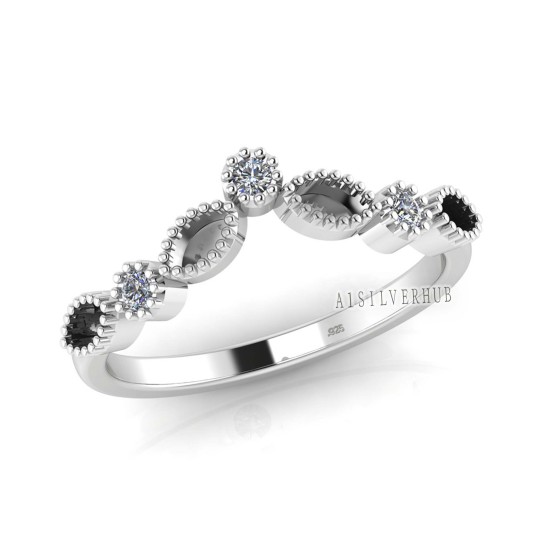
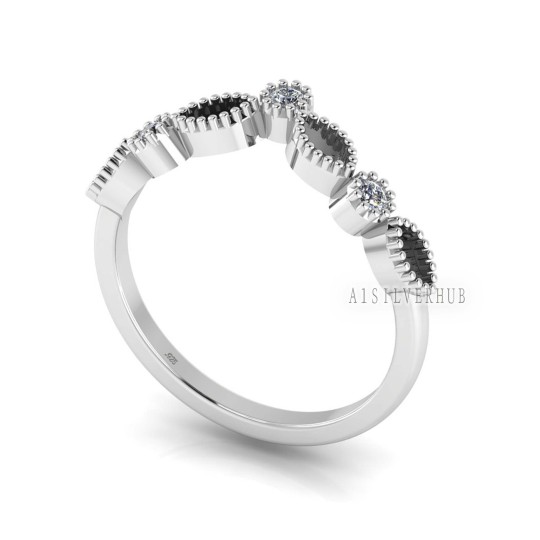

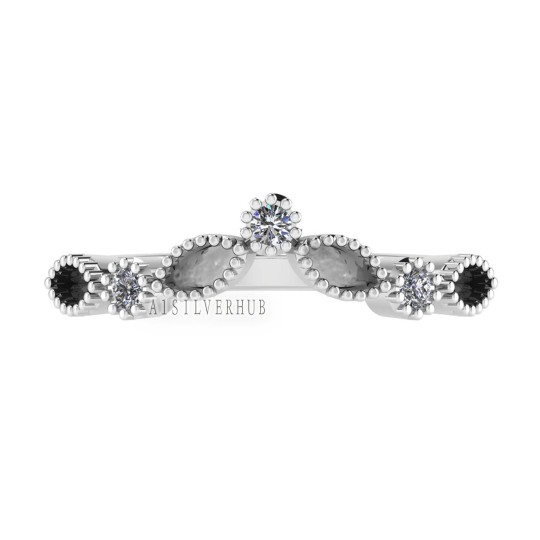

925 Sterling Solid Silver Marquise Blank Bezel with CZ Set Ring, Good for Resin & Ashes Breastmilk DIY Work, Keepsake Ring, Memorial Jewelry
Description :
Round Bezel CZ size - 2mm
Marquise Bezel Size - 2x4mm
Metal: 925 Solid Sterling Silver
Type: Chevron Band Ring
Ring Size: Optional
Quantity: 1 Piece
Link on my bio to purchase
#925 Sterling Solid Silver Marquise Blank Bezel with CZ Set Ring#Good for Resin & Ashes Breastmilk DIY Work#Keepsake Ring#Memorial Jewelry#Description :#Round Bezel CZ size - 2mm#Marquise Bezel Size - 2x4mm#Metal: 925 Solid Sterling Silver#Type: Chevron Band Ring#Ring Size: Optional#Quantity: 1 Piece#Link on my bio to purchase#findings#resin#resinart#findingsforresin#catring#instagram#onlineshopping#fashion#accesories#trending#smallbusniess#support#usa#uk#london#japan#thailand#etsy
2 notes
·
View notes
Text
Buy Wedding Jewellery online - Custom & Antique Design | Metalicious
Get the latest gold and diamond Wedding jewelry for every bride. Explore our wide range of gold and diamond Rings, Earrings, Bracelets necklaces, and more jewelry. Buy Wedding Jewelry Online At Metalicious.
#wedding jewelry#wedding ring sets#wedding earrings gold#wedding bracelet for bride#wedding necklace for bride#morganite engagement ring#Morganite Infinity Ring#Sterling Silver Necklace#Wrought Birthstone Bezel Bracelet#Bront毛 Stud Earrings#metalicious jewelry#unique custom jewelry#unique handcrafted jewelry#alternative bridal jewelry#unique handmade jewelry#handmade jewelry#buy pearls jewelry online#new stylish jewelry#stylish jewelry#antique jewelry collection
0 notes
Text

#Spiny Mohave#Oyster Copper Turquoise Earrings#Pear Shape Earring#925 Sterling Silver#Bezel Set Dangle Earring#Wedding Anniversary Gifts#Description :#Metal: 925 Sterling Silver#Stone: Spiny Oyster Copper#Size: 10x14mm#Shape: Pear Shape#Type: Dangle Earrings#Link on my bio to purchase#love#fashion#photooftheday#beautiful#photography#picoftheday#happy#follow#nature#tbt#instagram#travel#like4like#style#repost#summer#instadaily
0 notes
Text
Blue Sapphire Rings



Bayco's Sapphire & Diamond Lotus Ring
"A platinum & oxidized silver Lotus ring centered upon a cushion Ceylon sapphire, set atop a bed of sapphire pavé setting with an underlying colorless diamond micropavé accent."
- Jedora

Sapphire Diamond Platinum Ring
"A sapphire and diamond ring, set with an oval faceted Ceylon sapphire, weighing an estimated 2.07cts, surrounded by round brilliant-cut diamonds, weighing an estimated total of 0.92cts, within a navette shape, with calibré sapphires and round brilliant-cut diamonds forming a scallop shaped surround, with diamond set shoulders, mounted in platinum."
- 1st Dibs


Marquise Halo Diamond & Sapphire Ring
"This stunning ... ring has a 4.4 x 10 marquise diamond center stone with square sapphires on the inner halo and paves of diamonds in the rounded scallops, bows and ribbons; surrounded by milgrain all over. The bow on each side has a bezel diamond with a twisted ribbon shank half way."
- PriceScope.com



Chatila Sapphire and Diamond Flower Ring
"This mesmerizing 18 carat white gold transparent blue oval sapphire and diamond ring by Chatila features 49 smaller sapphires spread out on a bed of white diamonds on the petals. The band is also decorated with three rows of diamonds and a front row of blue sapphires. Guaranteed to turn heads."
- 1st Dibs



Cultured Pearl and Sapphire Ring
"Centering on a cultured pearl surrounded by light and dark blue sapphires
Metal: 18k white gold Sapphires: 24 oval and 16 round sapphires Cultured Pearl: 1 white cultured pearl measuring approximately 15.00 mm in diameter Marks: 750 Size/Dimensions: US ring size 6.75 Gross Weight: 18.7 grams"
- Christie's


Secret Wonder by Harry Winston
"Exquisite medallions, meticulously set with a starburst of round and pear-shaped diamonds, rotate to reveal a symphony of sapphires, diamonds, and aquamarines hidden on the other side."
- Harry Winston & Vogue


Sapphire, Diamond and Emerald Ring
"Designed as a serpent set with round sapphires, the eyes set with round emeralds, centering a cabochon sapphire weighing 10.32 carats, size 7."
- Sotheby's
#jewelry#jewellery#jewels#high jewelry#high jewellery#rings#ring#reversable ring#blue sapphire#sapphires#sapphire#diamond#diamonds#aquamarine#aquamarines#emerald#emeralds#cabochon#cabochons#platinum#white gold#silver#oxidised silver#bayco#chatila#harry winston#christies#christie's#sothebys#sotheby's
81 notes
·
View notes
Text

An exceptional, all original, Edwardian-era engagement ring with an old European cut diamond weighing approximately 1.30 carats set in a silver topped bezel with an intricate surround of filigreed flowers and scrolls. Beautifully made and rare to find. The diamond is off-white color and has a few inclusions near the edges of the stone, but it faces up silvery and has no flaws visible to the naked eye.
eriebasin.com
67 notes
·
View notes
Text

Hand-forged and one-of-a-kind labradorite amulet made by me 💘
Carved natural labradorite skull set in sterling silver. Rings and bezel soldered to a thick backplate for durability.
Can be worn multiple ways, tied into hair, laced through shoelaces, or as a choker.
In metaphysical circles, labradorite is revered as a potent protector, shielding one’s aura to ward off negativity. It's believed to not only guard against external forces but also to help neutralize internal negativity. Labradorite's renowned iridescence, symbolizing transformation, is closely tied to its reputation as a stone that bolsters inner strength and self-value. Additionally, it's thought to stimulate the throat chakra (communication, self-expression, creativity). While not linked to any specific zodiac sign, labradorite is often said to resonate strongly with those born under the sign of Cancer.
153 notes
·
View notes
Text

Mourning Ring for Vice-Admiral Sir Samuel Cornish, 1770
Amethyst, diamonds, gold and enamel. Bezel set with a faceted amethyst encircled by diamonds in a closed setting, the shank set with black enamel decoration around the inscription ‘Sir Sam. Cornish … 30 Oct 1770 AE 56’.
Sir Samuel Cornish is remembered for the Capture of Manila in 1762 during the Seven Years War - the conflict that found Britain competing with France and her allies around the globe. For nearly 200 years Manila had been at the centre of the imperial Spain’s galleon trade with Acapulco, trading Mexican silver for Chinese silk, porcelain and spices. After Spain allied herself with France in 1762, the British government approved plans to attack Havana and Manila.
Samuel Cornish was appointed to the command of the naval forces bound for Manila comprising 12 ships-of-the-line, 3 frigates and 4 store ships, with his flag in HMS Norfolk. Brigadier-General William Draper commanded land forces of 6,839 soldiers, sailors and marines. By posting a frigate in the Strait of Malacca, Cornish ensured that no news of the impending strike reached Manila prior to the fleet's arrival on 23 September 1762. The city walls were breached on 5 October and on the following day the place was taken by storm. Draper did his utmost to put a stop to the rape and plunder of the town, and with Cornish agreed to accept a ransom of 4 million dollars from the Spanish acting Governor-General Archbishop Manuel Rojo del Rio y Vieyra.
The British occupation of Manila lasted 18 months until the city was returned to Spain under the 1763 Treaty of Paris.During their time in the Philippines, the British found themselves confined to Manila and Cavite, but were rewarded with the capture of the treasure ships Filipina and Santísima Trinidad. These captures made Draper and Cornish wealthy men to the extent that they could retire on the prize money. Both were thanked in Parliament, and Cornish received a Baronetcy.
Sir Samuel Cornish (c1715-1770) was believed at one time to have risen from modest origins, and to have served his apprenticeship on a collier before being appointed to an East Indiaman, but it has been suggested these details relate to his father. Cornish is known to have entered the navy as a volunteer ‘per order’ in 1728. He was commissioned lieutenant in the Litchfield on 12 November 1739, and on 11 November 1740 he moved, with Captain Charles Knowles, to HMS Weymouth, in which he served in the ill-conducted combined operation at Cartagena during March and April 1741. On his return to England he was appointed to command the bomb-ketch Mortar; and on 12 March 1742 he was posted flag captain of the old HMS Namur, flagship of Admiral Matthews in the Mediterranean. In 1742 Cornish was appointed to command the Guernsey (50); and continued in her until the end of the ‘War of Jenkin’s Ear’, doing occasional good service in the destruction of Spanish privateers.
During the war of the Austrian Succession, he was present at the Battle of Toulon which saw the British lose control of the waters around Italy and Spain take the offensive against Savoy. Matthews was dismissed from the navy along with seven captains for lacking offensive spirit. Cornish’s part occasioned no comment, which must be considered an achievement in the light of the number of careers destroyed. On 9 March 1749, as a 'gentleman well skilled in mathematicks and natural knowledge', Cornish was elected to the Royal Society. In 1755 he commissioned HMS Stirling Castle for service in the channel, and in 1758 he was transferred to the Union (90 guns), and was ordered by Lord Anson to wear a distinguishing pennant.
On 14 February 1759 Cornish was promoted Rear-Admiral of the White, and sent out to the East Indies with a small squadron to reinforce Vice-Admiral George Pocock, and undertook operations to clear the coast of Coromandel, which established his reputation as a commander able to co-operate effectively with the army. He succeeded to the command of the East Indies station in 1761, but became embroiled in a dispute with the East India Company over the plunder taken from the French at Pondicherry. Nevertheless his professional competence in combined operations won him the command of the Manila expedition.
Cornish returned to Europe with a comfortable income from prize money. In 1765 he purchased the manors of Sharnbrook, Tafte, and Temple Hills in Bedford. The Duke of Norfolk supported his election as MP for Shoreham, a seat he held from December 1765 until his death, and on 9 January 1766 he was created a baronet, taking his style as Sir Samuel Cornish of Sharnbrook. About this time he married Susan, daughter of James Gambier of Holborn and sister of Admiral James Gambier; they had no children. Cornish died on 30 October 1770, whereupon his title became extinct and his estate passed to his nephew, Samuel Pitchford, captain in the navy, who took the name Cornish.
54 notes
·
View notes
Text

Ernest Swanson Argillite Raven Pendant
This pendant is carved front and back, with a piece of abalone set in a silver bezel that flips to compliment whichever side is facing outwards. Argillite is a fine black slate which occurs only at a quarry on a Slatechuck Mountain, near the town of Skidegate in Haida Gwaai. It is carved exclusivly by peoples from the Haida nation. The Raven is an important crest figure for the Haida peoples. He is known for his intelligence, creativity, and transformative abilities.

#ravenclaw#ravenclaw aesthetic#harry potter#argillite#haida#haida people#haida nation#haida gwaii#pendant#raven#haida raven#necklace#blue#black
16 notes
·
View notes
Text


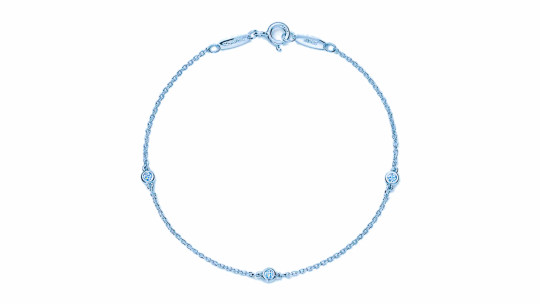
Catherine's Jewel Vault (17/∞) ♛
↬ Elsa Peretti® Diamonds by the Yard Bracelet
First worn by Catherine when she and Prince William touched down in Ottawa for their North-American tour in 2011; the Diamonds by the Yard Bracelet became a staple in her official Olympics wardrobe, having been worn by her on almost every appearance during the 2012 London Olympics.
This Tiffany & Co. bracelet was designed by Elsa Peretti and is a piece from the company's Diamonds by the Yard collection.
One of Catherine's go to bracelets in the earlier years following her wedding to Prince William, it is 7" in length and features three bezel-set diamonds separated by a chain in sterling silver.
#catherines jewel vault#catherines jewel vault.#british royal family#british royals#royalty#royals#brf#kate middleton#catherine middleton#royal#duchess of cambridge#british royalty#princess of wales#the princess of wales#princess catherine#diamonds by the yard bracelet.#elsa peretti#tiffany & co#tiffany and co.#british royal jewels#royal jewels#jewelry#catherines bracelets#catherines bracelets.#jv tiffany and co#tiffany and co jv#royal fashion#fashion#royaltyedit#royalty edit
69 notes
·
View notes
Text
Techniques and craftmanship methods require for Jewelry making
Jewelry making involves a wide range of techniques and craftsmanship methods, each requiring specific skills, tools, and materials. Here are some of the most common techniques used in jewelry making, whether for handmade artisanal pieces or mass-produced collections:
Hand Fabrication
Sawing: Using a jeweler’s saw to cut metal sheets into desired shapes.
Filing & Sanding: Smoothing and refining metal surfaces or edges after cutting.
Soldering: Using heat to melt solder (a metal alloy) to join pieces of metal, such as attaching clasps, links, or settings.
Forging: Shaping metal by hammering it to create texture, thin it out, or curve it.
Polishing: Using buffing machines, wheels, or cloth to achieve a high-shine finish on the metal.
Casting
Lost Wax Casting: A mold is created from a wax model, which is then melted and replaced with molten metal. This is one of the oldest techniques used for making detailed metal jewelry pieces.
Centrifugal & Vacuum Casting: Used to ensure the molten metal flows evenly into the mold, minimizing air bubbles and imperfections.
Stone Setting
Prong Setting: Small metal prongs are used to hold a gemstone in place. Common for engagement rings.
Bezel Setting: A metal rim encircles the gemstone to hold it securely.
Pavé Setting: Multiple small gemstones are set closely together, often giving the illusion of a continuous surface of stones.
Channel Setting: Gemstones are set between two strips of metal, allowing for a seamless, smooth look.
Flush Setting: The gemstone is set flush with the metal surface, offering a sleek and modern aesthetic.
Gypsy Setting: Similar to flush setting but usually involves a hammered finish around the gemstone, used for bold, simple designs.
Engraving & Embellishment
Hand Engraving: Using sharp tools to carve intricate patterns or designs into metal surfaces.
Laser Engraving: A modern technique that uses lasers to create detailed engravings or inscriptions, often used for personalization.
Etching: Using acid or other chemicals to corrode the surface of the metal in specific patterns, creating a textured or detailed design.
Filigree
Wire Work: Fine wires of gold or silver are twisted and shaped into intricate designs, often with lace-like appearances. This technique requires high precision and is often used in traditional jewelry.
Enameling
Cloisonné: Small cells or compartments are created with metal wire, which are then filled with enamel (colored glass powder) and fired to create vibrant patterns.
Champlevé: Enamel is applied into recessed areas of metal, then fired to create a colored design.
Plique-à-Jour: A transparent enamel technique that allows light to shine through, giving a stained-glass effect.
Hammering & Texturing
Chasing: A technique where the surface of the metal is hammered from the front to create patterns or designs.
Repoussé: The reverse of chasing, where the metal is hammered from the back to create a raised design.
Texturing: Using different hammers, stamps, or other tools to create a variety of surface textures, such as hammered, brushed, or matte finishes.
Wirework
Wire Wrapping: Jewelry made from twisting and wrapping wire into shapes and loops, often around gemstones, beads, or crystals.
Weaving & Knotting: Using wire or string to weave intricate patterns, often incorporating beads or small stones.
Beadwork
Stringing: Threading beads, pearls, or gemstones onto a string or wire to create necklaces or bracelets.
Knotting: Tying knots between beads (commonly pearls) to ensure they don’t rub against each other and for added strength.
Loom Beading: Using a loom to weave tiny seed beads into patterns for bracelets, necklaces, or other accessories.
Electroforming
Metal Coating: This is a process where a base material (such as a wax or organic object) is coated with a metal layer through electroplating. It’s commonly used for creating lightweight, hollow jewelry pieces.
CNC & 3D Printing
CNC Machining: This computerized technique is used to carve precise patterns and designs into metal or wax, enabling intricate designs that are difficult to achieve by hand.
3D Printing: Used for prototyping or creating complex designs, 3D printing involves creating a wax or resin model layer by layer, which can then be cast in metal using traditional techniques.
Inlay & Marquetry
Stone Inlay: Stones, such as turquoise or lapis lazuli, are cut into thin pieces and inserted into metal grooves to create decorative designs.
Wood or Shell Inlay: Wood, shell, or other non-metal materials are inlaid into metal surfaces to create intricate designs or mosaics.
Embossing & Stamping
Stamping: Using metal stamps or dies to create patterns or letters on the surface of a piece.
Embossing: Using pressure to raise designs on metal surfaces, creating a three-dimensional effect.
Granulation
Beading Technique: Small metal beads or granules are applied to the surface of a piece and soldered to create intricate designs, often used in ancient and traditional jewelry styles.
Soldering & Welding
Soldering: Used to join metal pieces together with the help of solder and heat.
Laser Welding: A modern technique using laser technology to weld small or delicate pieces of metal together, often for intricate repairs.
Pearl & Bead Setting
Knotting: Hand-knotting is used in pearl necklaces to separate each pearl and add durability.
Glue Setting: Some beads and pearls are set using adhesives, especially in designs where drilling holes isn't practical.
By mastering these techniques and methods, jewelry makers can produce pieces ranging from simple, minimalist designs to complex, ornate creations. The choice of technique depends on the desired aesthetic, materials used, and the skill level of the jeweler.
5 notes
·
View notes
Text
Why Silver Diamond Beads Jewelry is in Trend
In fashion world, there are some trends that not only catch our eye but also capture our imagination. They perfectly blend tradition with modern flair. One such trend is silver diamond beads jewelry.
Learn more: https://jindalgemsjaipur.weebly.com/blog/why-silver-diamond-beads-jewelry-is-in-trend
#silver beads#silver bezel setting#jewerly#gemstone beads#buy beads online#precious gemstone beads#semi precious gemstone beads
0 notes
Text
🖤✨— During the past few weeks, I’ve been teaching myself how to solder, among other things such as fabricating bezels for necklaces from sterling silver sheet metal and wire. In the photo above, you’re actually looking at a memento I made for a good friend of mine - this is her dog (Biminis) blood casted with epoxy and set into the bezel! Biminis is still with us today, but this memento will be something to hold onto forever! I’ve also been experimenting with doing the same thing with ashes as memorial pieces for animals that have passed away. For those who might have questions, please feel free to DM me! This process is completely safe, and no animals were harmed in the making of this!—— .
.
.
.
https://www.instagram.com/bent_artistry?igsh=MWsxMHB1Znd2c2F1aw%3D%3D&utm_source=qr
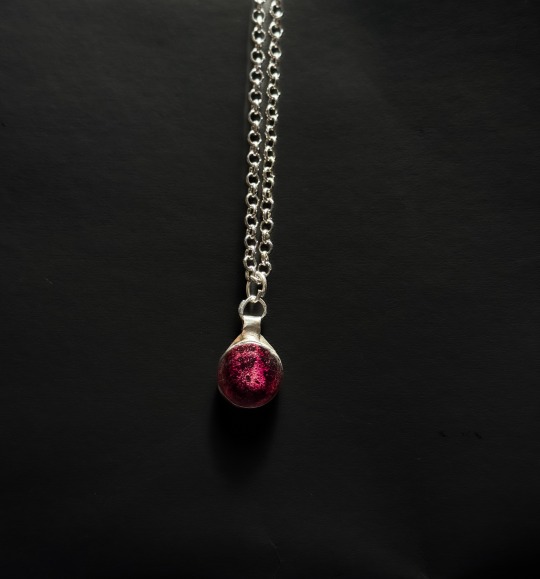


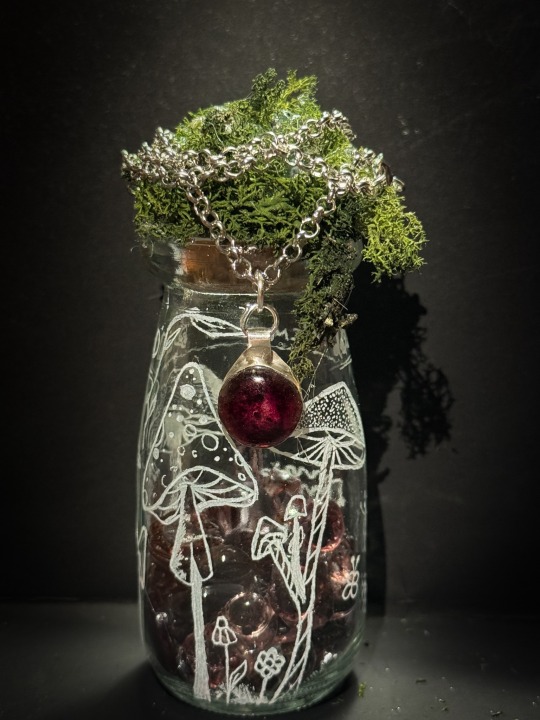
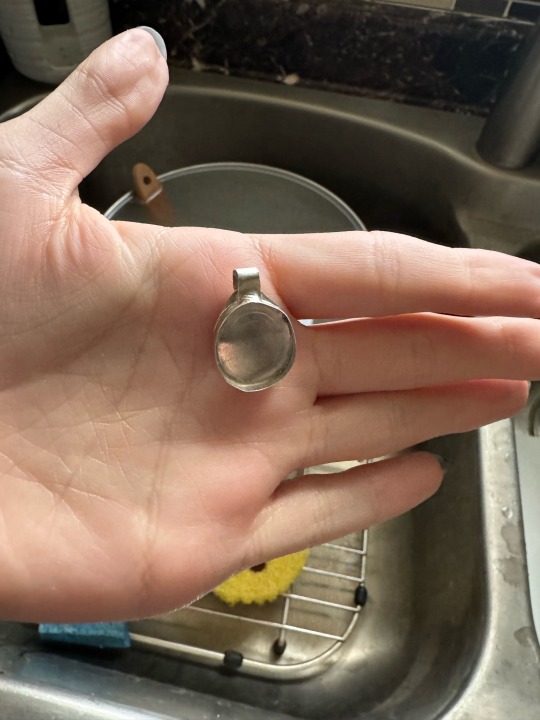

#gothic#vampcore#gothcore#goth jewelry#jewelry#diy craft#epoxy#tw blood#bloodborne#bloodweave#bloodletting#fire and blood#bloddy#avatar the last airbender#blood smith#heavy metal#metal#metalsmith#silversmith#jewish#jewellery#jewerly#emo girl#emo jewelry#oddities#odditycollector#oddity art#animal art#alternative clothing#alchemy tat
12 notes
·
View notes
Text
Arno Victor Dorian : Character Study. TIME.
⠀ ⠀⠀⠀
⠀ ⠀ ⠀⠀⠀⠀⠀ 🦢⠀.⠀ ݁ ⠀، ⠀ ⠀ ⠀ ╱ ⠀ ⠀ ⠀ character stu͟d͟y͟ .
⠀⠀⠀⠀ ⠀⠀⠀ ⠀⠀ ⠀⠀⠀ ⠀⠀ ⠀ ⠀⠀ ⠀ ⠀ ⚜︎ ⠀ ⠀ . ⠀ ⠀ ݁ ⠀ ଼ ⠀ ⠀⠀⠀
∙ ⠀ caption format by colette / taratellr ⠀
∙ ⠀ word count 1166.
∙ ⠀ Assassin’s Creed Unity
⠀⠀ 🕯 ⠀⁄ ⠀ ⠀ ݁ ⠀،، ⠀arno victor do͟r͟i͟an && t𝘪͜𝘮͜𝘦͜ .
“i still have your pocket watch ,
my dear father . like me ,
it is broken , but stubborn ,
and still keeps going .” —Arno
To his father in the Abstergo Entertainment Employee Handbook.


∙ Arno’s pocket watch is composed of workings both outer and inner. From the red velvet protecting the glass to the gears that continue to shift and make the clock tick. In letters to his father, Arno refers to himself as the watch, using words like “broken” and “stubborn.” After it had fallen from his hands in the Palace of Versailles, it continued to function. This mirrors a human experience of a traumatic event: still operational but damaged.
To better understand Arno and his struggle with time, let's break down the pieces of a pocket w𝘢̼𝘵̼𝘤̼𝘩̼.
Dial: The dial, also known as the face, is where the time is displayed. It typically includes hour markers, minute markers, and sometimes additional complications such as a date window or a small seconds sub-dial. Hands: The hands are the moving indicators on the dial that points to the current time. There are usually three hands: an hour hand, a minute hand, and a seconds hand. Crystal: The crystal is a transparent cover that protects the dial and hands. It can be made of various materials such as mineral glass, synthetic sapphire, or acrylic. Case: The case is the outer shell of the pocket watch that houses all the internal components. It is typically made of metal, such as gold, silver, or stainless steel, and can have various designs and finishes. Movement: The movement is the heart of the pocket watch. It consists of the mechanical mechanism that drives the hands and keeps time. There are different types of movements, including manual wind, automatic, and quartz. Crown: The crown is a small knob on the side of the case that is used to set the time and wind the watch. It is typically located at the 3 o’clock position. Bezel: The bezel is the ring that surrounds the dial and holds the crystal in place. It can be fixed or rotating, depending on the design of the pocket watch. Chain: The chain is a decorative accessory that is attached to the pocket watch and is used to secure it to a garment or belt loop. It can be made of various materials, such as metal or leather.
The components of Arno can be likened to the parts of a watch—not as mechanical pieces, but as representations of his psyche, emotions, and actions. Arno refers to himself as the watch, so examining him in this context helps us understand his character.
For the dial, we’ll consider Arno as the ticking time bomb when he is intoxicated. (I love him, but I’m going to be a little mean.) - His movements (seconds) are usually quick. He joins the Assassins’ cause with only two thoughts in mind: avenging François De La Serre and cutting to the chase. The hands represent Élise (hour), François (minute), and himself (seconds). - As the hands revolve around the dial, so do Élise and François, who are pivotal to Arno’s development and growth. These two people occupy his mind continuously, counting down the seconds of Arno’s life. He helps Élise (hour) in her quest to avenge her father (minutes). The crystal represents Arno’s heart. - When it first broke, it shattered in the Palace of Versailles, clattering to the ground. The watch remains broken even through François’ passing and is only repaired after Élise’s death. His heartache begins to mend with the crystal, even if it takes centuries. The case is represented by Charles Dorian, François De La Serre, and Pierre Bellec, as well as Arno’s metaphorical shell. - The case bears the emblem of the Creed. Each father figure or mentor in Arno’s life is protective. Charles is his biological father, François is his surrogate father, and Bellec is his mentor. All wish to protect Arno. Arno’s metaphorical casing represents his tendency to shut down emotionally, retreating into himself to drink away his sorrows and distancing himself from those he has hurt—whether physically or mentally, intentionally or otherwise.
Movement is linked to Élise and Arno’s heart (motives and intentions). - Arno’s focus on avenging De La Serre, is deeply driven by his feelings for Élise. From childhood, he has been awestruck by and devoted to both of them, using them as his motivation to find Germain. The Crown. The Creed and Templar Order. The Templar order set the stage for the hands to move around the dial. It was already predestined that Elise would follow in her father's footsteps. Similarly, since Arno’s father was an assassin, it was expected that he too would continue the legacy left for him. The Bezel is Elise. Elise has grown up with Arno and has seen his hardships firsthand - being the only person able to pull him back from his casing and hold him together. In losing Elise, his new Bezel is her final written words, still keeping him up and attentive. The chain is Arno himself. After enduring each hardship and loss, Arno is the only one who can hold and care for himself. The entirety of the pocket watch represents both those around him and himself; when they are no longer present, their memories keep time moving forward and help him continue for their sake. He achieves this by repairing the crystal.
∙ Arno's watch remains a treasured gift from his father. While waiting for Charles’ return, Arno glances at the watch, hearing its ticking in response. As he approaches his lifeless body, the watch falls from his hand as he freezes in shock — it continues to click, but to Arno, it sounds like a piano underwater. For him, time has also stopped.
∙ As time continues to pass, we see Arno again, older and still playfully clinging to his watch. He recklessly gambles it away and loses it, his loss of self when intoxicated.
∙ At the end of the main game, Arno's watch is repaired, symbolizing his acceptance that time is short and that he cannot hold onto it forever. He was mending his heart just like the glass. Slowly from the grief that surrounds him.
∙ In "Dead Kings," the watch shows no signs of wear as it remains tucked away in his pocket, sheltered from the temperamental aggressors. Time seems to move faster now as Arno's journey to Egypt is hurried — there is no room to savor memories, such as those of Elise, whose ghost serves as a constant reminder. Not until Leon becomes a bezel for him, the same as Elise.
#arno dorian#assassins creed#assassins creed unity#arno victor dorian#he's so babygirl#i love arno so much#elise de la serre#charles dorian#assassinscreedstories#character study
3 notes
·
View notes
Text

#925 sterling silver pendant 20 mm moon star mother baby keepsake breast milk blank metal casting for pendant settings bezel cup for pendant#Metal: 925 Sterling Silver#Size: 20mm & 6mm#Shape: Moon & Star#Type: Pendant Collet#Link on my profile to buy#LUAHJewelry#sweatproof#waterproof#lifeproof#durablejewelry#hypoallergenic#luahlife#fashion#jewellery#handmade#earrings#accessories#jewelrydesigner#jewelrydesign#jewels#instajewelry#luxury#jewelrygram#alizahsjewelry#anojewelry#iloveearrings#handmadejewelry#handmadeearrings#madeinseattle
1 note
·
View note
Text
Vintage Sapphire and Diamond Convertible Tiara Necklace



A vintage sapphire and diamond convertible tiara necklace.
"An exceptional vintage sapphire and diamond convertible tiara and necklace set, in platinum, circa 1950. This beautifully handcrafted tiara is easily transformed into necklace by simply unclipping it from its frame, no additional screws or parts are needed! The tiara is composed of nine cabochon cut sapphires, each individually bezel set within an elegant diamond scrolled cluster surround, providing a beautiful amount of sparkle to the jewel.
The handmade frame that the tiara sits on is made of German Silver and handstitched brown velvet. Stamped with Assay marks for France."
- 1st Dibs


#tiara#tiaras#diadem#diadems#hair piece#hairpiece#headpiece#head piece#head ornament#headornament#hair ornament#hairornament#tiara necklace#convertible tiara#necklace#necklaces#blue sapphire#sapphire#sapphires#diamond#diamonds#platinum#1st dibs#tiaras crowns#tiarascrowns#tiara crown#tiaracrown
44 notes
·
View notes